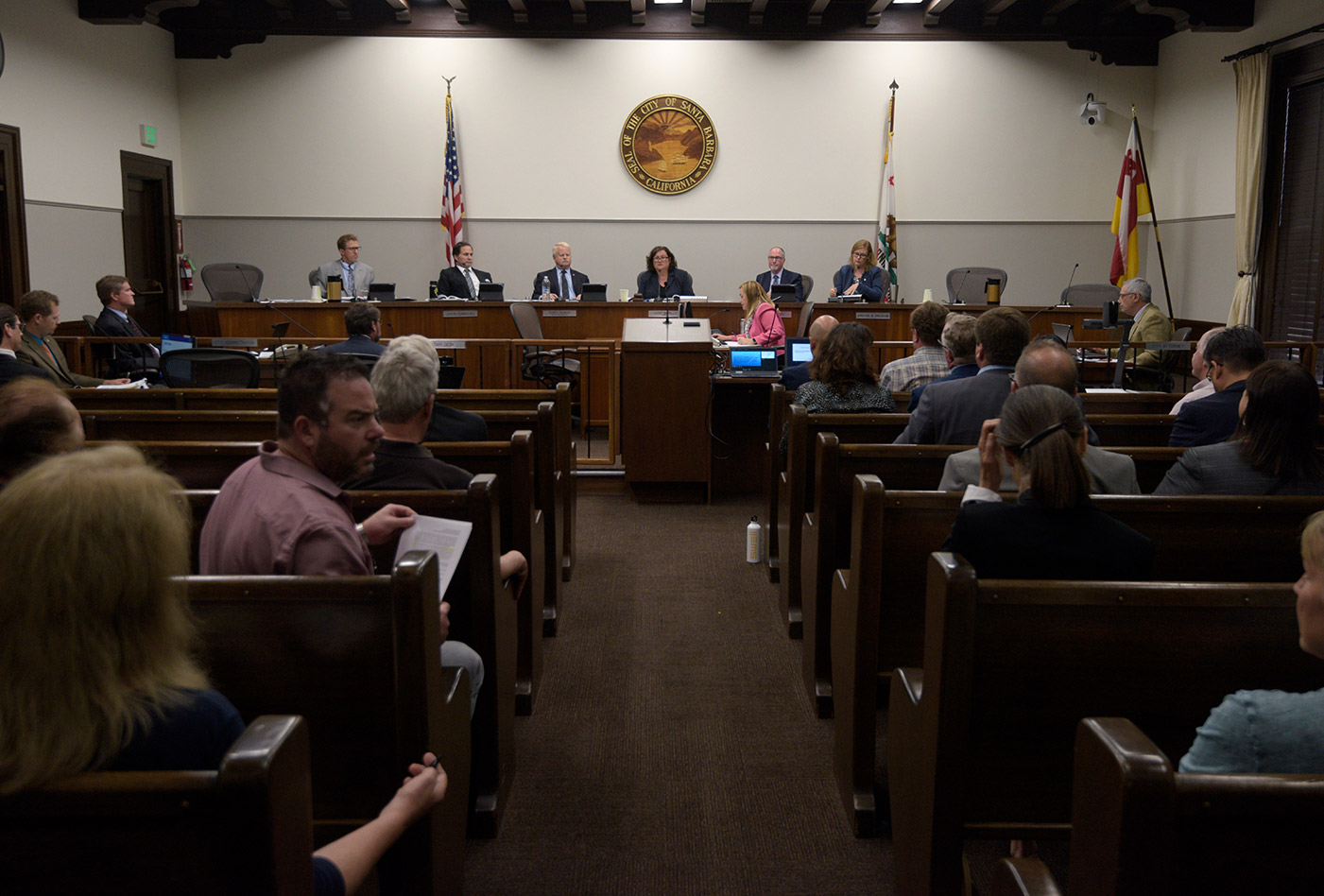Council Votes to Tweak Highly Debated Housing Program
Proposed Rules Would Make More Units More Affordable

The best line of the night came from the man who wasn’t even there. From a black speaker box perched discreetly on the Santa Barbara City Council dais came the disembodied voice of Councilmember Jason Dominguez, beamed from a hotel room somewhere in South Africa, where he was staying as part of an educational excursion. “This is like going to the store and coming home with 60 bottles of milk and one box of cereal,” said Dominguez, talking about one of his pet peeves, the city’s much-argued-about Average Unit-size Density (AUD) housing program.
This program was hatched eight years ago to motivate private developers to build new and unsubsidized rental housing, something they hadn’t done in meaningful numbers for close to 40 years. By any reckoning, the AUD program has been spectacularly successful, lighting a short fuse under the collective posteriors of Santa Barbara’s development community. The $64 million question confronting the City Council and all of City Hall, however, is whether it’s the right kind of rental housing. A growing chorus of voices is objecting that the program has created housing catering to renters on the higher end of the income spectrum, households making anywhere from $80,000 to $140,000 a year. During a four-hour discussion this Tuesday, they argued the program needs to be seriously tweaked to target working families who make up “the missing middle” of Santa Barbara’s economic strata instead. In the lingo of the debate, that’s the so-called “sweet spot.”
The council discussion took place at the instigation of city planners hoping to take the political pulse of the council on what’s been a divisive and thorny policy. Was there enough consensus on the council to justify the exhaustive community outreach such tweakage will entail? The answer was emphatically yes. By a six-to-one vote, the council embraced a handful of small but significant alterations. Councilmember Gregg Hart cast the only dissenting vote, after delivering an impassioned soliloquy extolling the virtues of leaving well enough alone and not messing with success.
The AUD program allows participating developers uncommonly high densities while imposing notably fewer parking requirements. To change the formula now — based on only two projects that have actually been built — was to court disaster. Developers hate risk and uncertainty, he said. “Government is not a scalpel,” he warned. “Government is an axe.” Hart wasn’t bothered if well-off renters were benefiting disproportionately from developer incentives that have some neighborhood activists howling about overcrowding, parking problems, and gentrification. It’s all about increasing the housing supply, he said. To people who say, “‘This is the end of Santa Barbara!’” Hart said, “it’s just not, and it’s crazy to say that.”
Hart was abandoned by his usual council allies, who all endorsed new rules that require that some percent of all units built in AUDs be affordable to people making less than $80,000 a year. Some councilmembers, like Oscar Gutierrez, wanted 25 percent; others were more inclined to go with 10 or 15 percent, the maximum allowed by state law. All but Hart also voted to express openness to high-density AUD housing developments downtown in the Central Business District, just as long as it was a mixed-use project. In addition, there was openness to using city parking garages — now typically only 50 percent full — for downtown’s new residential AUD tenants.
Councilmembers have found themselves caught in a political crossfire over the AUD program. Neighborhood activists complain their sacrifice is not compensated by the production of affordable housing. On the flip side, the State Legislature will no longer tolerate local controls that impede the production of new housing. According to Chamber of Commerce President Ken Oplinger, for every new residential unit built in California the last five years, five new residents have moved here. Assistant City Attorney John Doimas warned councilmembers of new state laws that will strip local governments of all local control if they abuse, impede, or obstruct new housing. In extreme cases, Doimas warned, the Legislature would require local governments to issue over-the-counter permits to large-scale developments.
The council vote sets no new law. It merely sets the course for future actions the council will try to take.



